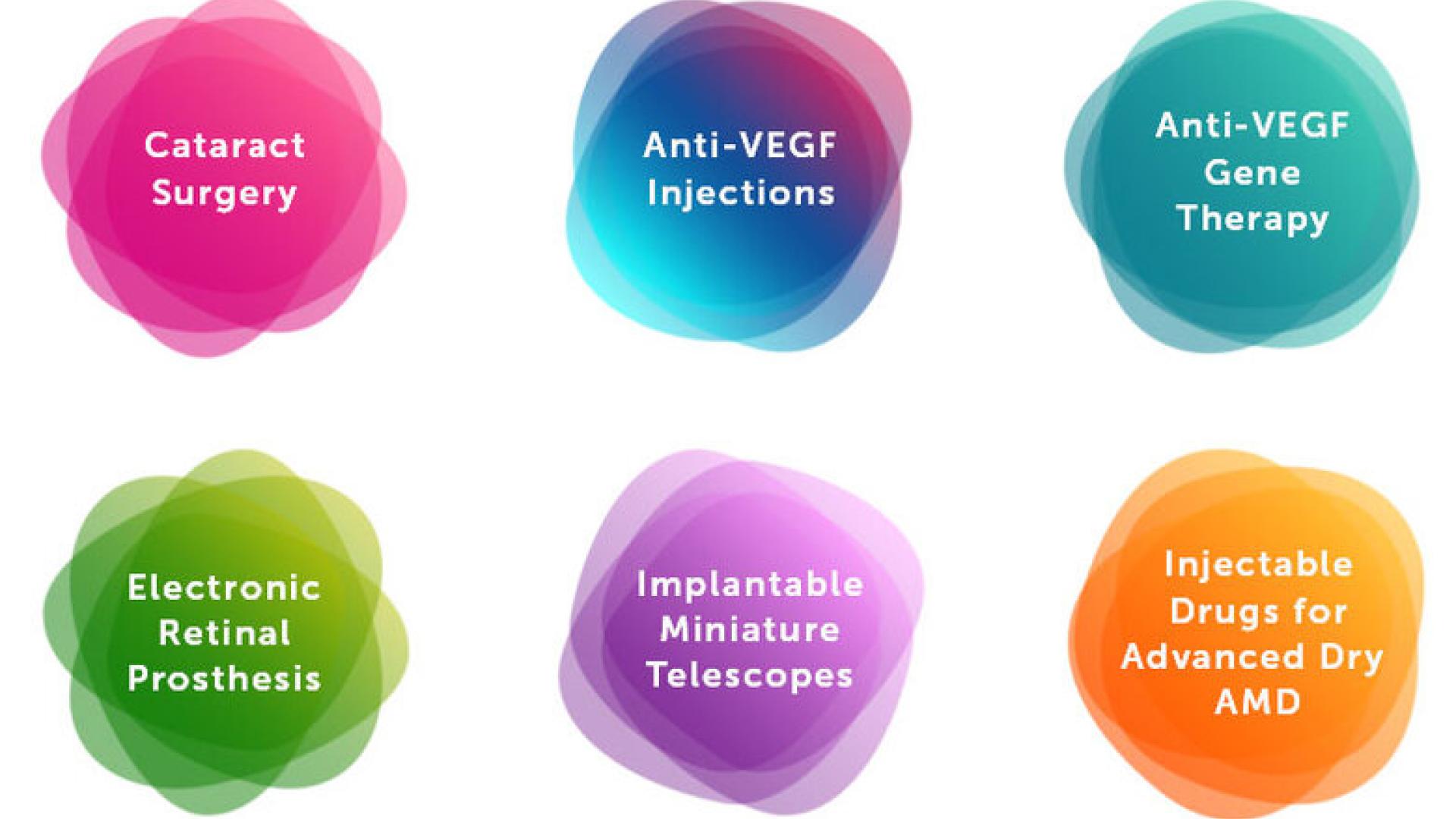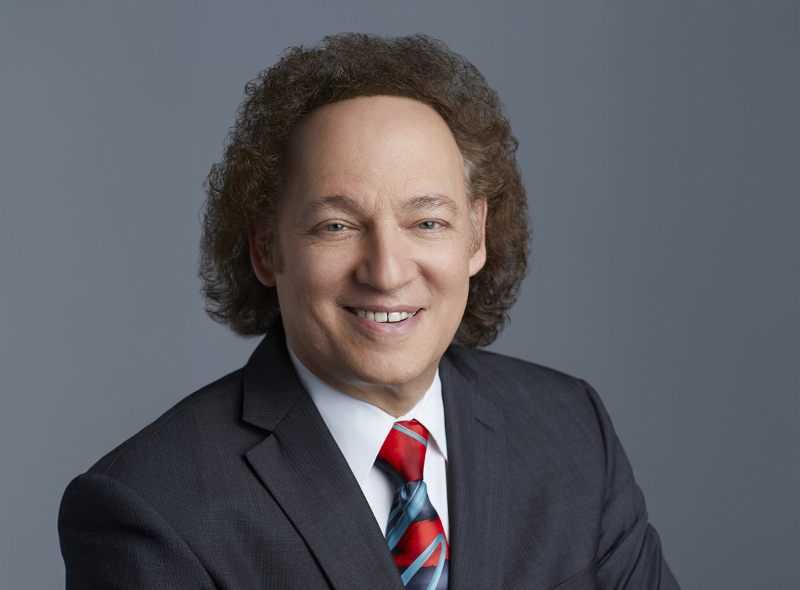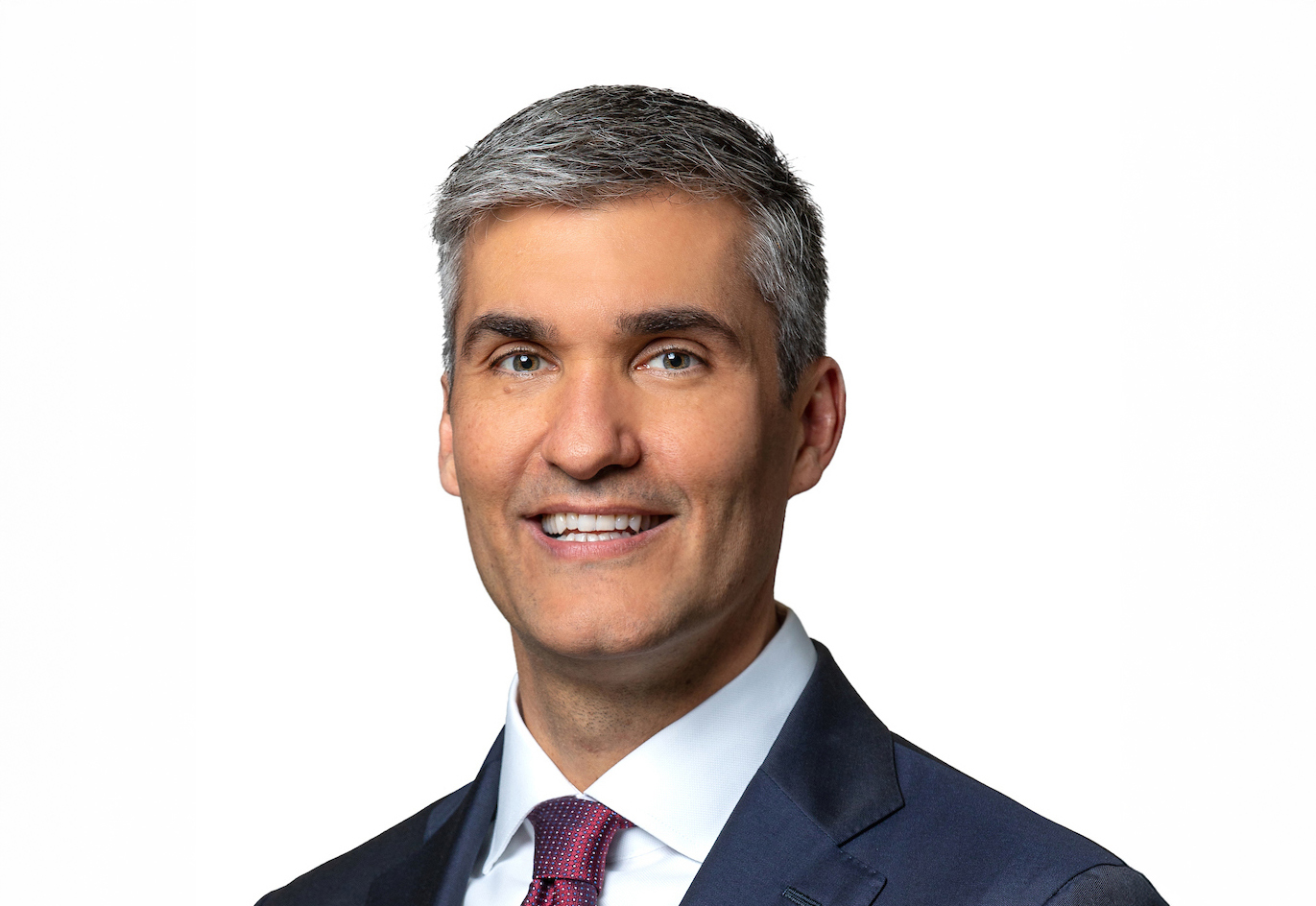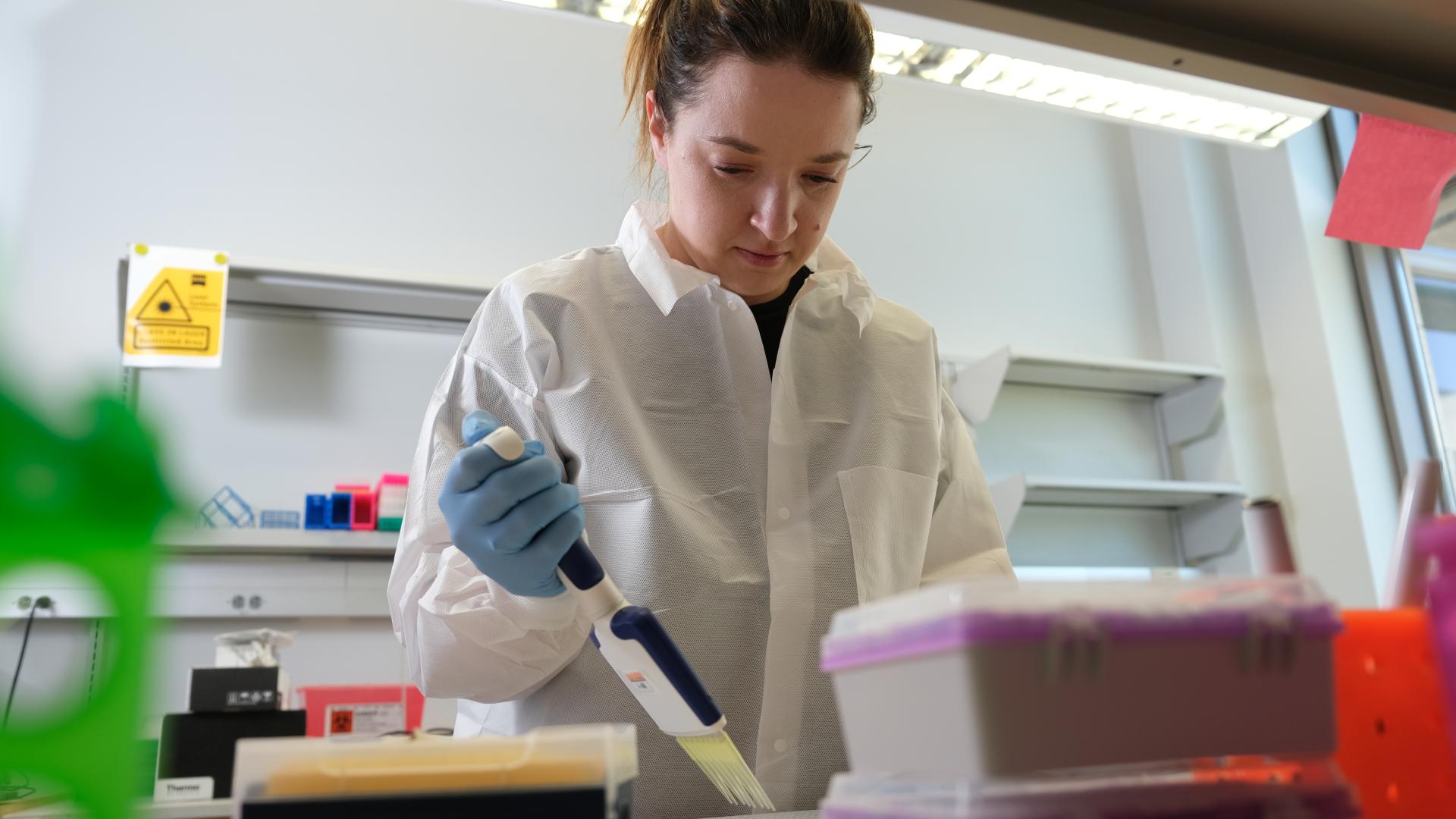
Learn about a number of procedures and surgeries that are currently available or are in clinical trials for patients with advanced age-related macular degeneration.
Cataract Surgery
A cataract is caused by clouding of the lens in the front of the eye. This is not related to macular degeneration, which affects the retina in the back of the eye. However, many patients with AMD also have cataracts because both conditions are common among people aged 60 or older. If a patient with AMD has cataracts, she or he may see better after cataract surgery. Clinical studies have shown that cataract surgery does not make the AMD disease process worse. In general, cataract surgery is very safe, with more than 95% of patients developing no complications. Depending on the severity of the cataract and the severity of the AMD, it may be worthwhile to have cataract surgery. A device called a potential acuity meter (PAM) projects an eye chart through the cataract and can help determine how well the retina could see if the cataract was removed. Ultimately, the decision about cataract surgery for patients with AMD should be made after careful consideration and discussion with the ophthalmologist.
Intraocular Injections of Anti-VEGF Drugs
For wet AMD, the standard treatments are intraocular injections of drugs that block vascular endothelial growth factor (VEGF). These drugs, aflibercept (Eylea®), ranibizumab (Lucentis®), and bevacizumab (Avastin®), typically work for four to eight weeks and then need to be injected again.
Another anti-VEGF drug that was recently approved by the FDA, brolucizumab (Beovu®), lasted as long as 12 weeks between treatments in half of the patients in a clinical trial. However, a downside of Beovu is ocular inflammation. The rate discovered in the clinical trials was 4 percent for Beovu versus 1 percent for Eylea. Most of the cases of ocular inflammation associated with Beovu resolved without any further problems after treatment with anti-inflammatory eye drops. However, on Feb 23, 2020, the American Society of Retina Specialists (ASRS) sent a report to its membership that 11 of the 46,000 injections (less than 1/10,000) of Beovu injections done so far in the US were associated with serious retinal blood vessel occlusions, which can lead to permanent vision loss. The pharmaceutical company, Novartis, reported that in March, about 1/1,000 patients had severe ocular inflammation.
Anti-VEGF Gene Therapy
Retinal gene therapy for AMD appears very promising now that retinal gene therapy has been approved by the FDA for another disease called Leber’s congenital amaurosis. RGX-314 is an anti-VEGF treatment delivered by gene therapy. It has the potential to block VEGF for years following a surgical procedure in which a harmless virus, called adeno-associated virus (AAV), carrying the anti-VEGF gene, is injected under the retina in the operating room. In a phase I/II clinical trial, three of six patients did not require any further anti-VEGF injections over a two-year period. This group, on average, gained 14 letters on the eye chart. Additional groups with different doses also show evidence of effectiveness. No drug-related serious adverse events were observed. An in-office suprachoroidal procedure to deliver this gene therapy will be tested soon.
ADVM-022 is another AAV-anti-VEGF gene therapy, but in contrast to RGX-314, it is injected into the vitreous jelly, like Lucentis, Eylea, and Avastin. This means that it can be delivered in the office rather than in the operating room. In a phase I trial, the first six patients did not require any further anti-VEGF injections in the year following ADVM-022 injection. Among patients on a lower dose and taking steroid eye drops to reduce inflammation in a more recent group of clinical trial participants, four or five did not require any further anti-VEGF treatments within 20 weeks of the ADVM-022 injection, and overall these patients gained 6.8 letters of visual acuity on the eye chart. The visual acuity improvement should only be compared to that of RGX-314 with caution, as these are small numbers of patients, and they probably had different disease severities when treated with the gene therapy.
Electronic Retinal Prosthesis
For patients who have had severe vision loss, electronic chips can be surgically implanted on the retina. These devices directly stimulate surviving neurons in the retina, which lose their inputs after the light-sensing photoreceptors die. The vision provided by this technology is quite limited, but can still be helpful in certain patients. Read about the Argus II retina implant that was approved for treatment of advanced retinitis pigmentosa and age-related macular degeneration.
Implantable Miniature Telescopes
Some patients with severe vision loss can benefit from an implantable miniature telescope. The implantation involves removing the lens that’s inside the eye and positioning the telescope in its place. The telescope provides an enlarged view, often providing improved vision in carefully selected patients.
Injectable Drugs for Geographic Atrophy
For patients with geographic atrophy (GA), there is currently no FDA-approved therapy. However, in a phase II trial, the complement C3 inhibitor Apl-2 significantly inhibited the expansion of the area of atrophy. Complement is an arm of the immune system that seems to be overactive in AMD. The drug is now in phase III clinical trials. Apl-2 is injected into the eye either monthly or every other month. This drug is also being tested for wet AMD. Zimura, which inhibits another protein in the complement cascade, C5, is also being tested by intraocular injection for GA. In a phase II trial, it slowed the growth of GA.
Summary
Overall, there are a number of procedures available for AMD patients with advanced disease. Patients with early AMD can reduce their risk by taking AREDS vitamins (if recommended by an ophthalmologist) and a diet rich in green leafy vegetables, fruits, twice-weekly fatty fish (salmon, sardines, mackerel, tuna), and quitting smoking.
About BrightFocus Foundation
BrightFocus Foundation is a premier global nonprofit funder of research to defeat Alzheimer’s, macular degeneration, and glaucoma. Through its flagship research programs — Alzheimer’s Disease Research, Macular Degeneration Research, and National Glaucoma Research— the Foundation has awarded nearly $300 million in groundbreaking research funding over the past 51 years and shares the latest research findings, expert information, and resources to empower the millions impacted by these devastating diseases. Learn more at brightfocus.org.
Disclaimer: The information provided here is a public service of BrightFocus Foundation and is not intended to constitute medical advice. Please consult your physician for personalized medical, dietary, and/or exercise advice. Any medications or supplements should only be taken under medical supervision. BrightFocus Foundation does not endorse any medical products or therapies.
- Treatments










